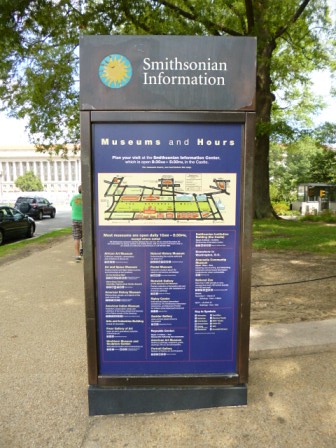Last week was the Museums Australia National Conference in Adelaide. As one of the organisers, there is a sense of relief in being able to say that the week went off without any major hitches.
I have to say that I was pleased with the overall result – in particular we had put some considerable thought and care into the way that we combined the keynote speakers in the program, and from where I was standing this went well (even better than expected in some instances!). We also tried some different session formats, inevitably with some being more successful than others. You learn, you refine, you improve.
However, because I was so close to proceedings, it’s a little hard to give a critical reflection on the presentations and discussions that took place. So it’s a good thing there are plenty of other people who can do that for me! I was impressed by the number of delegates who contributed to the life of the conference through social media, particularly via the conference’s #masa2012 Twitter hashtag. Looking at how the Twitter activity has matured over the past three Museums Australia conferences is a good case study in how more and more people are starting to ‘get’ social media.
So rather than a comprehensive conference wrap from me, I’ll compile links to the tweets, blogs and photostreams of others. I hope this will give a good picture of the week’s proceedings. Here’s what I’ve found so far, and let me know if I’ve missed something out:
- Tweets
There was good activity and conversations on Twitter. Suse Cairns (known in the twitterverse as @shineslike) kindly agreed to compile Storify of the tweets to the #masa2012 hashtag. It was great to see a lot of different people using twitter to contribute and converse (in previous years it has either been slow to get going, or otherwise dominated by a handful of accounts which may have discouraged newcomers from contributing).
- Blogs
Thornypebble’s Pond: Day 1, Day 2, Day 3 and Conference Presentation UPDATE: this very interesting and thoughtful piece about the use of twitter at conferences.
Museum Geek: Dispatch and Initial Takeaways from MA National Conference
Digital Nico: Mobile Engagement and some other scribbles
Pete Hoban: Day 1 (am), Day 1 (pm), Day 2, Day 3 (plenary), Day 3 (workshops), Rural and Regional Plenary.
- Photos
Museums Australia SA Photostream of the Welcome Ceremony, Conference Day One, Day Two, Governor’s Reception, Day Three, Conference Dinner and Regional Remote and Community Museums day.
Photoset of the conference from Adelaide Archivist.
- Presentation Slides
There are plans afoot to share as many conference slides as possible via a conference Slideshare page – I’ll update with further details as and when this takes shape. I also presented a paper (with Jenny Parsons), a snapshot (just me), and a workshop (with Katherine Sutcliffe) during the conference’s parallel sessions. These presentations have already been uploaded to Slideshare:
I was also interviewed by one of the delegates for a podcast, listening to which made me realise how fast I can talk sometimes! (I come in at about 1:30)




